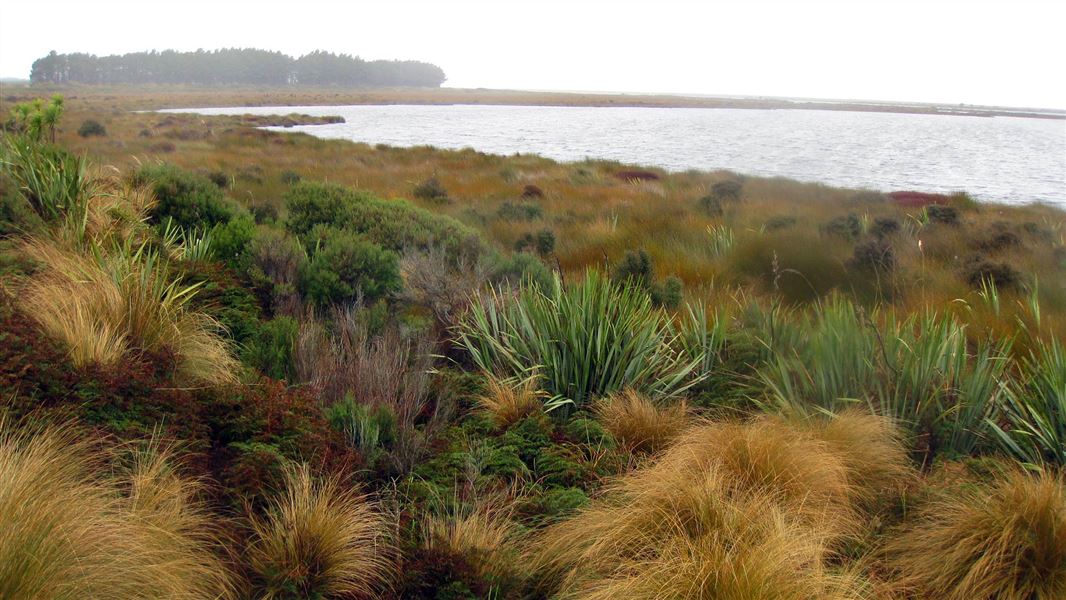Access into the Awarua-Waituna Wetlands area is difficult although you can view some of the cushion bog and other communities near the road end at the head of Awarua Bay located approximately 20 km south of Invercargill.
To go bird watching at Awarua Bay, travel towards the Tiwai smelter from Invercargill until the bridge over Awarua Bay. Before crossing the bridge turn left onto Awarua Bay Road and follow the road to a parking area at Muddy Creek.
To reach feeding areas and roosts walk around the head of Awarua Bay and be prepared for some knee deep wading and estuarine mud in places. Although you can see birds at any stage of the tide, the best viewing is gained over high tide (1 to 1.5 hours after Bluff).
Waituna Lagoon is located 40 km south east from Invercargill at the end of Waghorns road and can be reached by road at several points. To get to the outlet it is necessary to walk along the coast from Waituna Lagoon Road (1.5 hours).At high tide or when the lagoon outlet is closed to the sea kayaks or small power boats can be used to explore the margins of the lagoon.
It is best to visit the head of Awarua Bay for bird viewing over high tide (1 to 1.5 hours after Bluff tide time). Be prepared for knee deep wading, estuarine mud and exposed conditions. Bring binoculars or a telescope.
Be prepared for variable weather in any season - take a wind and waterproof parka, overtrousers, hat, gloves and sunblock.
Access into the peatlands is difficult and there are many areas where the surface may give way. Always leave your trip intentions (return time, planned route, party numbers, etc) with a reliable person. Remember to check in on returning.
Do not light any fires when visiting Awarua Bay, Waituna wetland or Waituna Lagoon and coast. Even though by nature wetlands are wet they do burn very easily. In the past fires have swept through hundreds of hectares of the Awarua-Waituna Wetland and decades later the vegetation has still not fully recovered.
This is one of the three sites that make up the national Arawai Kakariki wetland restoration programme.
This site includes four major wetland types: coastal lagoons (notably Waituna Lagoon), freshwater swamps, extensive peatlands, and estuaries. It is visited frequently by many different trans-equatorial migrating and wading bird species, as well as threatened plants and insects including sub-alpine species.
Awarua Bay, in most years, holds the second highest number of waders and a greater number of species than other sites in Southland. It attracts rare visitors to New Zealand such as Siberian tattler, greenshank and sanderling. Review the list of birds at Awarua Bay - more than 80 different species have been recorded.
Waituna Lagoon and the surrounding 20,000 ha wetlands area was one of the first in New Zealand to be officially recognised as a wetland of international importance.
Find out more about these wetlands and the Arawai Kakariki programme.
DOC Customer Service Centre
| Phone: | 0800 275 362 |
| Email: | invercargill@doc.govt.nz |
| Address: | Murihiku / Invercargill Office |
